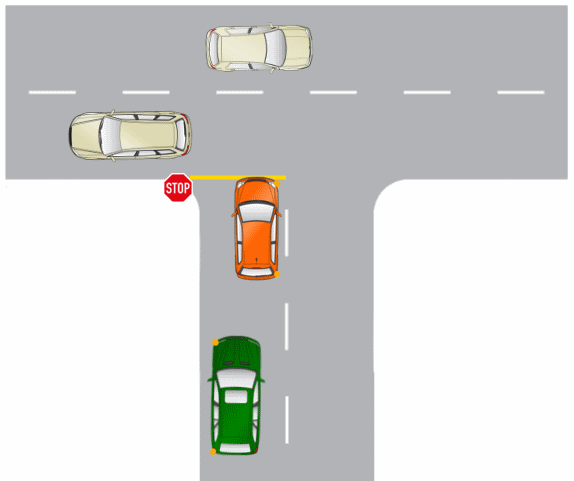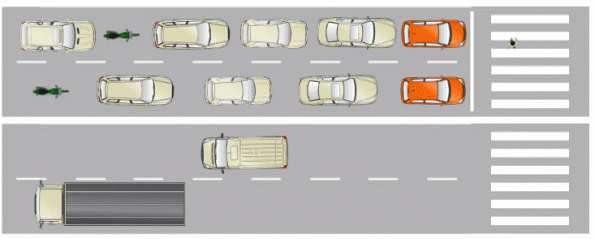You might need to stop behind another vehicle at traffic lights, an intersection, a pedestrian crossing, or in stop-start rush hour traffic. How far should you stop behind the vehicle in front?
“Tyres and tarmac”

Tyres and tarmac is an option taught by the UK police and it means you should stop far enough behind the vehicle in front so that you can see where their tyres touch the road. The benefits are:
- If you are hit from behind by another vehicle there is less chance you will hit the vehicle in front
- You can see much more of the road ahead (especially if it’s a large truck you are behind)
- There’s less likelihood of the vehicle in front rolling back into your vehicle if you’ve stopped facing uphill
- If the vehicle ahead of you breaks down or stalls you can more easily get around them
- Pedestrians can more safely walk through the gap between the vehicles
- A gap leaves a space which a filtering motorbike or cyclist can use – they’re going to get there quicker than you anyway, so there’s no point in begrudging them the space
- As you will brake slightly earlier to stop earlier, it gives you extra leeway if you hit a slippery patch (especially important when you’re on a motorbike)
- If a vehicle behind you looks like it’s not going to stop in time, you have a small amount of room to move ahead to give them more room to stop
- You’ll get less fumes into your vehicle or helmet if you are slightly further back.
Stopping with this safety buffer is, generally, the best option. However, if everyone stopped like this, rush hour would be much longer because less vehicles would get through each phase of the traffic lights, and where traffic backs up between lights, less vehicles will fit because of the bigger gaps. This increase frustration, fuel consumption and pollution, and ramps up costs for businesses that rely on driving.
As you can see from this diagram, traffic has stopped to let a pedestrian across. The lane at the top fits one extra car in for every 5 in the adjacent lane.

Therefore there’s another option, which doesn’t have a technical name, but let’s just call it “bonnet hides bumper”, or where the bonnet of your car obscures the bumper of the car in front. You don’t want your bonnet to be obscuring any more than that – definitely not the brake lights!
The advantages are:
- More vehicles can fit in a particular piece of road
- When vehicles move away from a green light, there’s less distance between them and therefore more vehicles pass through the light (assuming they’re not blocked by something else).
The disadvantages are that if the vehicle breaks down you will find it difficult to get around it without reversing, you’re more at risk of the vehicle ahead of you rolling back into you, you might get more fumes in your vehicle or helmet, and if you are hit from behind you will probably hit the vehicle in front, meaning extra damage for your vehicle, and extra hassle for all involved.
So, in light to moderate traffic on a flat or downhill stretch of road, use the tyres and tarmac method. If traffic is very heavy, stop-start and flowing downhill, use the bonnet hides bumper technique unless you feel that it’s unsafe to do so.
